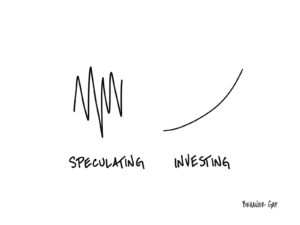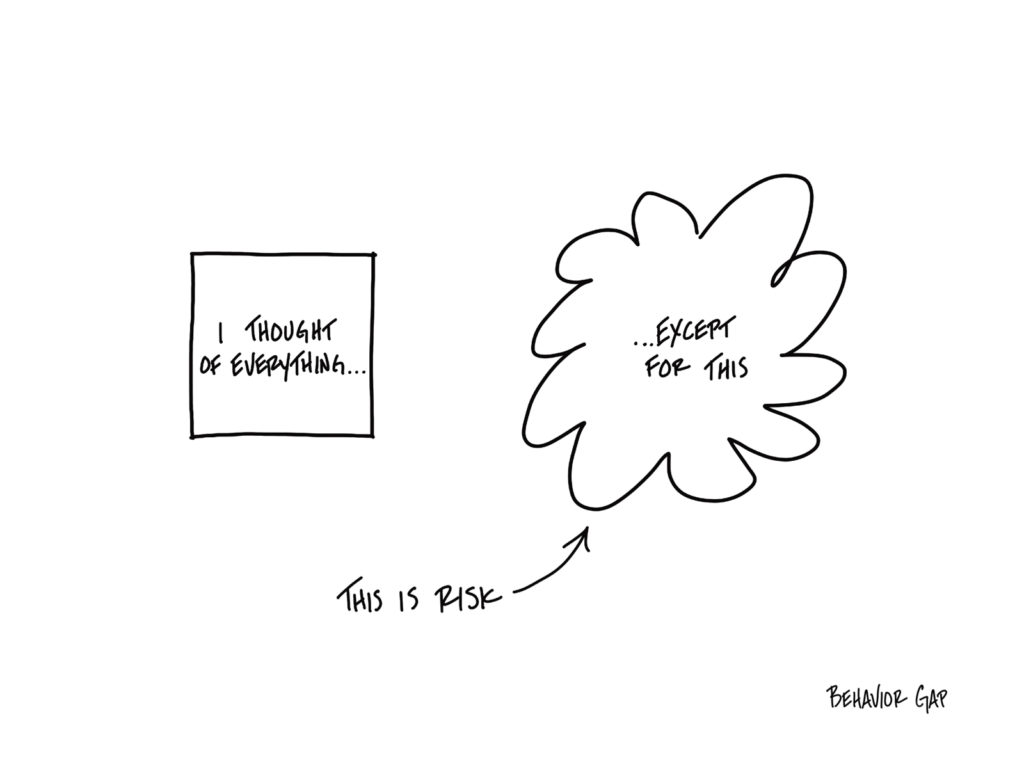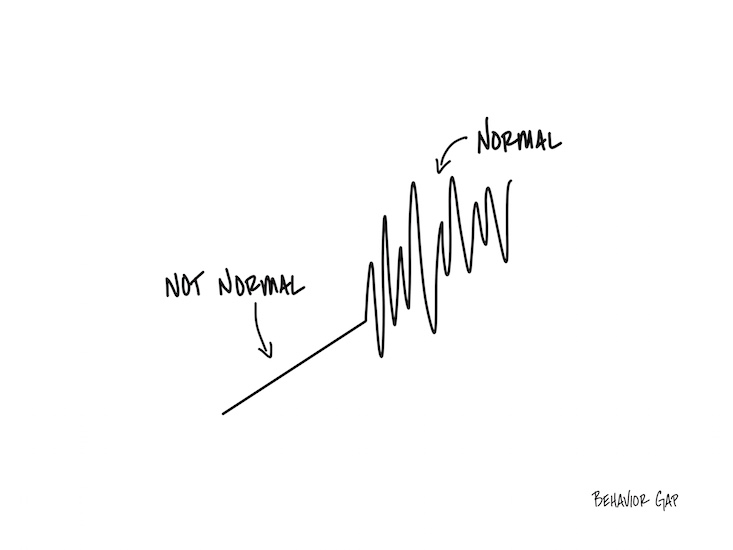Details Are Part of Our Difference
Embracing the Evidence at Anheuser-Busch – Mid 1980s
529 Best Practices
David Booth on How to Choose an Advisor
The One Minute Audio Clip You Need to Hear
Author: Carl Richards
Speculating Versus Investing

Speculating and investing are fundamentally different, and it pays to know why.
Speculating is exciting, full of breathtaking ups and downs. If you chart it over time, it looks like a heartbeat. Probably an elevated one.
Investing, on the other hand, is slow and boring. In the short term, you may have some ups and downs. But if you chart investing over time (over many years of time), it looks like a long slow curve upward.
Speculating is like a Vegas casino. Investing is like watching grass grow.
Know which game you’re playing.
Risk is What’s Left Over

We are really good at managing risk by looking backward and preparing ourselves to handle a situation we’ve already seen. But we’re not very good at managing risk by looking forward and preparing ourselves for something we can’t even imagine.
The problem is, “something we can’t even imagine” is precisely what we need to be prepared for. Because risk is what’s left over after you think you’ve thought of everything.
It’s not the car you see coming that will kill you… it’s the one you don’t.
Bummer, right?
Let me be clear: This doesn’t mean you should cover yourself in bubble wrap and lock yourself in your house.
The point is simply to foster general resilience. You know—like an emergency fund.
And guess what, emergencies will happen. When they do, general resilience provides a margin of safety.
That’s what will protect you from the thing you never saw coming… not trying to predict the future and certainly not bubble wrap.
Normal Volatility

Imagine it’s a very still day, and you’re in a boat on the ocean.
There’s no wind.
No swell.
The water is as flat as a mirror.
The calm goes on just long enough for you to start to feel like it’s normal.
When a small wave finally comes… it feels big. When a regular wave comes… it feels huge.
As scary as it might feel, it’s important to remember that waves are normal.
In fact, occasional storms are normal.
And the last thing you want to do when you get into a storm is abandon ship.

